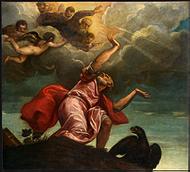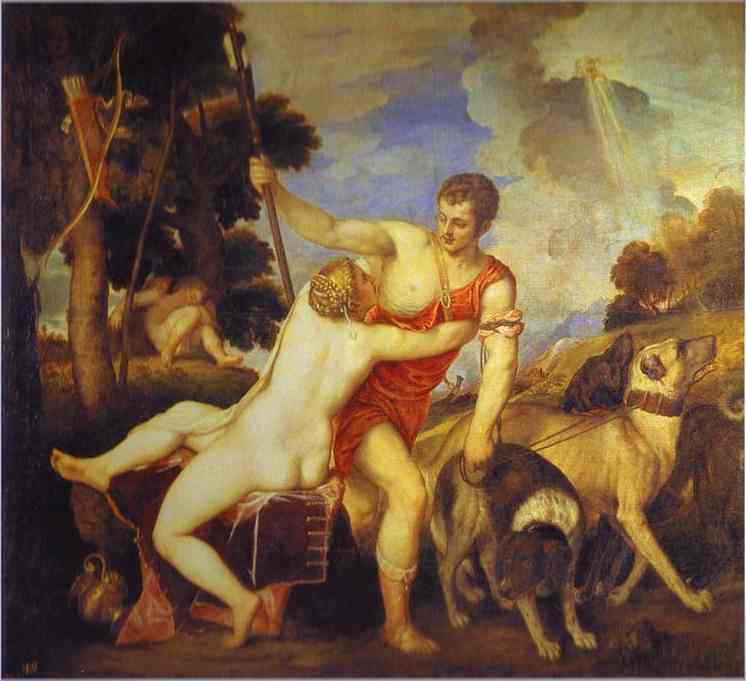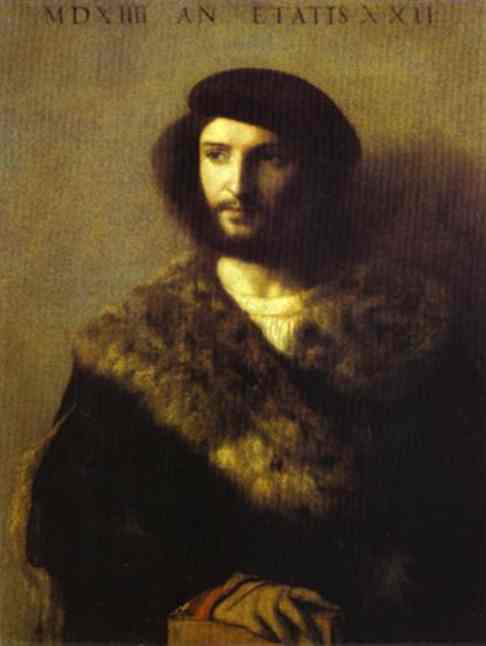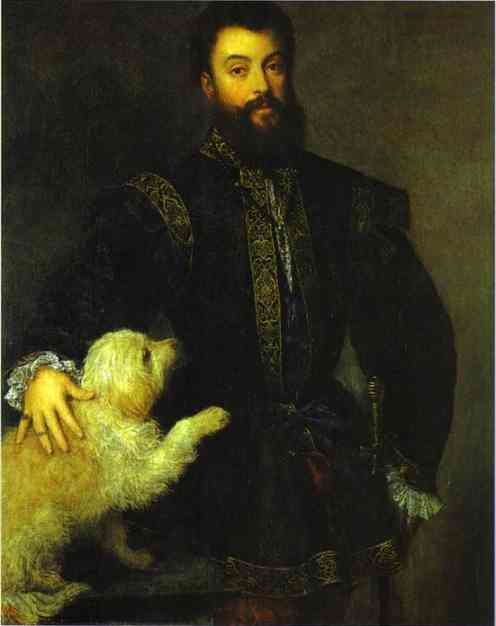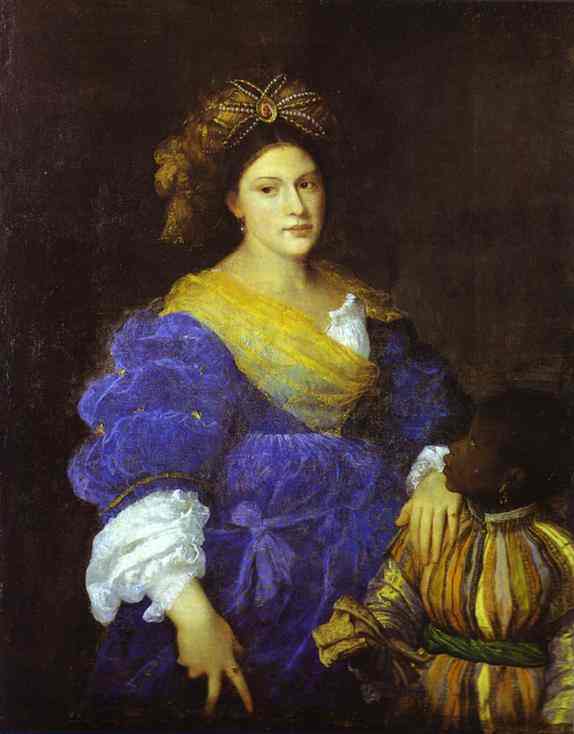Titian (Tiziano Vecellio), Italian
In about 1498, at the age of nine or ten, Titian and his elder brother Francesco were sent to Venice to start their training as painters. Soon thereafter he began studying painting in the workshops of Gentile Bellini and Giovanni Bellini. In 1507, Titian joined the workshop of Giorgione as his assistant.
| Plenty of books have information about the artist Titian and gorgeous pictures to go with it (Pages 286-287 or 254-255 of Discovering Art History), but if you want to see what all the fuss is about, you have to travel to the National Gallery in Washington, D.C. and look at the portrait of Ranuccio Farnese. When I saw this portrait I was awestruck - the detail in the fabric is amazing. Titian's paintings have as many as 30-40 glazes of oil paints, and you can't tell where one layer of paint ended and the next began. And you realize the immense difference between a flat, dry image in a book and the real painting. It's like looking at a picture of an NBA player on a poster, compared to sitting on the front row of a playoff game. It really is THAT different; go see the real thing if you can. |
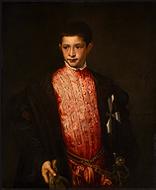 |
In the Renaissance, paintings by masters such as Titian were regarded like our movies, or television. Paintings and sculpture were the state of the art special effects, because they were the only practical way you could see heaven, or hell, or people and places far away. There was nothing more realistic than a painting or sculpture, as photography was years in the future. People were amazed at the talent and ability of a master to make people look so realistic and lifelike. Tourists would come to see the art works, and the city would make money from that tourism. Funny thing is, great works of art still have that effect on a lot of people, and they still draw tourists from around the world.
Art instead of Football
During the Renaissance, Italian cities had artists who competed, rather than
soccer or football teams. What mattered most to civic pride was which city had the best
artists and the most beautiful city, especially the cathedral. This made work for a lot of painters, as the church needed many pictures to help tell stories about Christianity. Titian lived in Venice, in northern Italy; he was a contemporary
of Michelangelo and Raphael, who lived in Rome and Florence. Venetians were naturally very proud of having Titian's studio in their city. He was very famous for painting many religious scenes for the Catholic church, as well as mythological scenes, which were once again becoming acceptable subject matter, but he made a fortune from his portraits. His wealthy patrons were usually church officials and aristocrats, and he was very good at handling money & business affairs.
While most people died before the age of 36, he
lived well past 80, so many people of his time said he was immortal. He
was the most popular artist of the late Renaissance, and he died wealthy.
Portrait of a Venetian Gentleman was done by Titian and Giorgione. It was common for the master painter (Giorgione) to have his apprentrices work on paintings he has planned out. Do you think Titian liked this gentleman?
